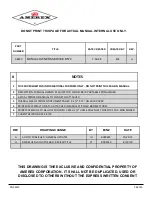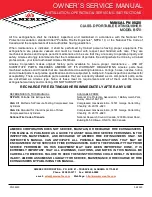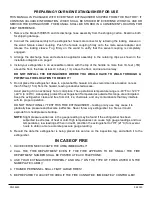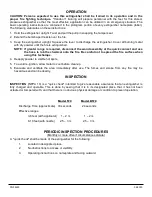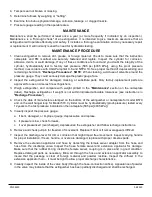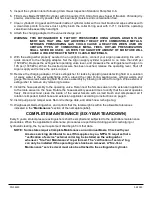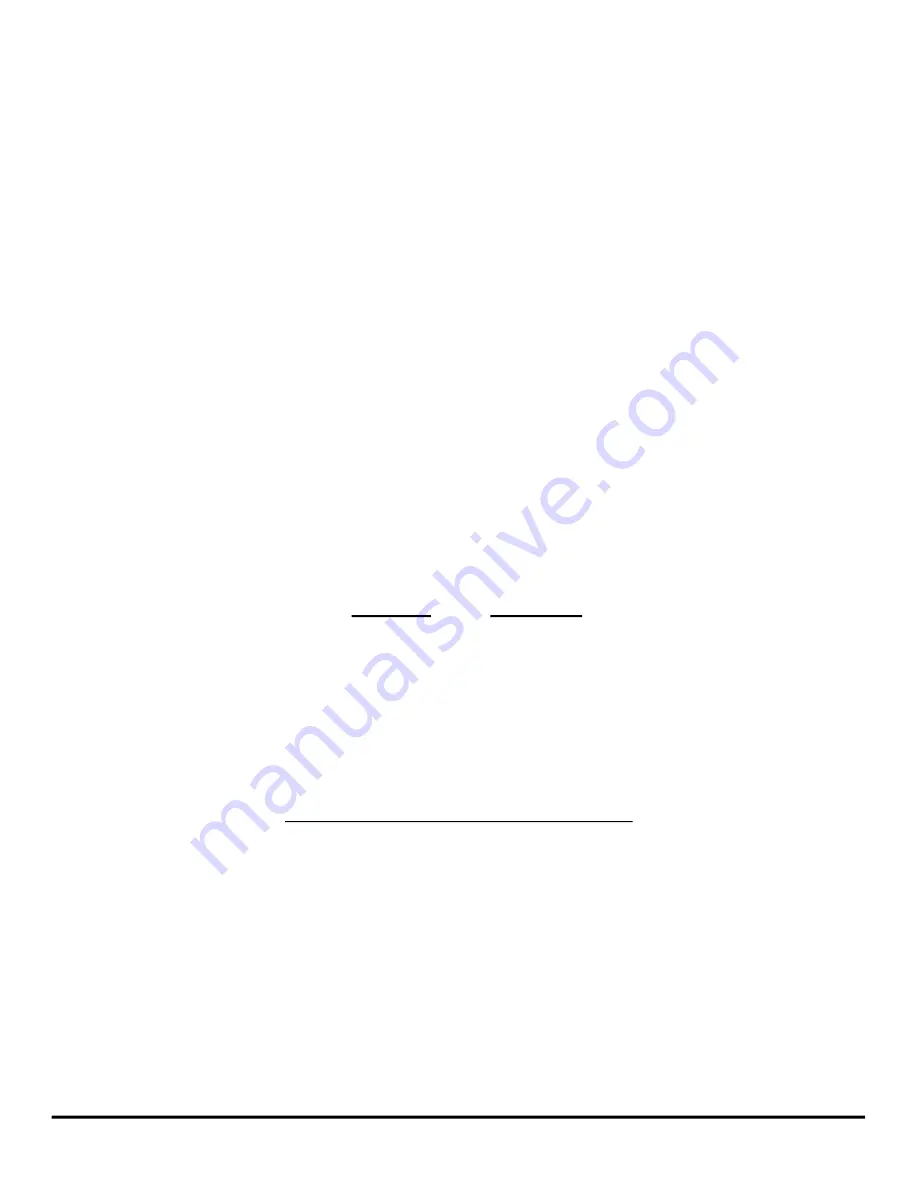
PN 08220
04/2020
OPERATION
CAUTION: Persons expected to use this extinguisher shall be trained in its operation and in the
proper fire fighting technique.
"Hands
-
on" training will prepare personnel with the feel for this stored
-
pressure extinguisher so that the most effective application can be utilized in an emergency situation. The
basic operating instructions are contained in the pictogram portion of every extinguisher nameplate (label).
The following elaborates on these instructions:
1.
Hold the extinguisher upright. Twist and pull the pull pin snapping the tamper seal.
2.
Extend the bell
-
shaped nozzle over the fire.
3.
Keep the extinguisher upright. Squeeze the lever to discharge the extinguisher. Cover all burning metal
with dry powder until the fire is extinguished.
NOTE: If greater range is required, disconnect the wand assembly at the quick connect and use
the hose to lob the chemical onto the fire. Be careful not to spread the fire surface when
using this technique.
4.
Reapply powder to visible hot spots.
5.
To avoid re
-
ignition, allow metal to cool before cleanup.
6.
Evacuate and ventilate the area immediately after use. The fumes and smoke from any fire may be
hazardous and can be deadly.
INSPECTION
INSPECTION (
NFPA 10) is a "quick check" intended to give reasonable assurance that an extinguisher is
fully charged and operable. This is done by seeing that it is in its designated place, that it has not been
actuated or tampered with, and that there is no obvious physical damage or condition to prevent operation.
PERIODIC INSPECTION PROCEDURES
(Monthly or more often if circumstances dictate)
A "quick check" shall be made of the extinguisher for the following:
1.
Located in designated place.
2.
No obstructions to access or visibility.
3.
Operating instructions on nameplate and facing outward.
Model 570
Model B570
Discharge Time (approximate) 30 seconds
24 seconds
Effective ranges:
3
-
6 feet (with applicator) 1 –
2
m
1
–
2
m
8
-
10 feet (with nozzle) 2.5 –
3
m
2.5
–
3
m

